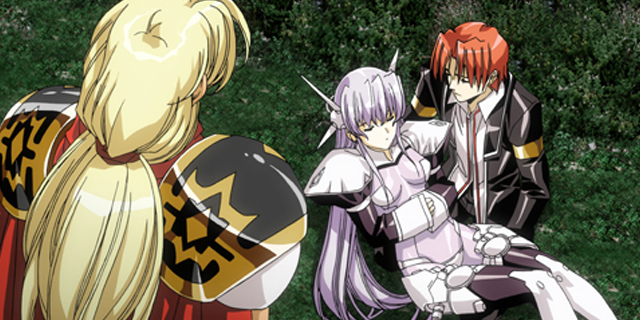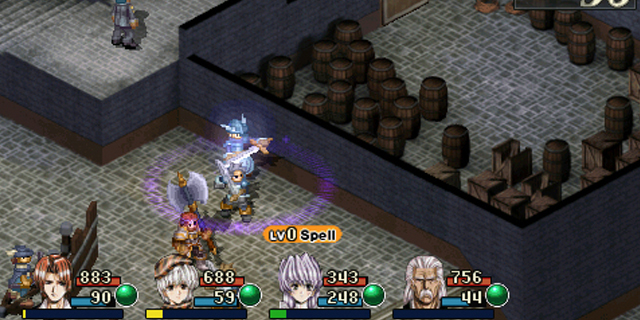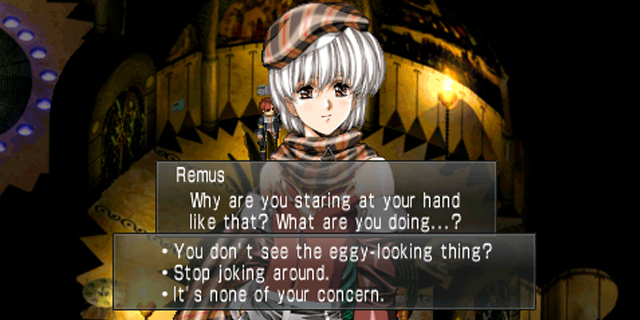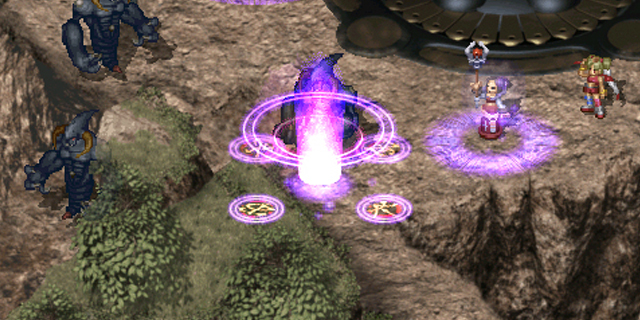
As a system reaches the end of its life, it tends to have one final flurry of quality titles as it goes. This is that time for the PSP, as the Japan-centric system gets what will likely be its last wave of translated RPGs. Most titles like these are destined to be ignored in their time and rediscovered later, but Growlanser: Wayfarer of Time has two things going for it that others don’t: Vita compatibility (at launch this time!) and a design that’s already detached from the current norm.
Wayfarer of Time is a port of the Japan-only PS2 title, Growlanser IV, and since we’ve only gotten II, III and V in the States, it’s nice to experience. Much like the other titles in the series, it’s a strategy RPG, but not in the most common sense. There’s no grid, and you don’t spawn into battles all the time. As you walk around, you’ll get near enemies, and then you start fighting that enemy and others nearby. It’s a formula we’ve seen in more traditional JRPGs, but the difference here is that the obstacles and positions you approach in can set things up in different ways. The equipment system is streamlined to one armor piece and one ring with slots to equip boosts, so it gets out of the way and lets inventory management generally boil down to whether you have enough healing items.

There are definitely some ways in which the game shows its age. The visuals would be nice in that pixel-art way, and they are in many contexts, but the problems come in partially-zoomed-in scenes that makes things look a bit messy. You have to hit a button when presented with dialogue choices before you get a cursor to use to choose something. Since there’s no “world screen” and “battle screen,” the areas are designed for battle and not, say, walking up to items and people and selecting them. You’ll spend some time failing to ask the innkeeper for a room, backing up and trying the approach again.
Here’s the thing, though: despite these problems, Wayfarer of Time is in many ways one of the most interesting, progressive games the genre’s ever had. Once you get used to the controls and get past the strange opening sequence (there’s talk of shopping, for some reason), there are things here worth experiencing.

The battles themselves are full of nuance. You can run from even many large battles, and it’s a viable, balanced strategy. Magic exists, sure, but not in large quantities, and there’s a true give-and-take. While there is MP to conserve, unlike other games, it’s less about that and more about determining whether you can afford to wait out the casting time and defend the caster. Party members come and go, so you have to adjust to having fewer front-line attackers or sticking and moving with a party without stationary ranged fighters.
It’s this strategic depth that makes the story of the game so much easier to enjoy. Even without that, though, this is a JRPG story of which you want to be a part. It isn’t pure good-and-evil; you’ll meet selfish people, overconfident people, overly-trusting people and people who change their minds when times get tough. Generally, you’ll need to be the one to save the world, but along the way you can be rebellious, diligent, silly or straight-up silent.

The main thing here is how the game makes you feel small. Yeah, you’re not an ordinary person, but there are times when all you can do is get up, talk and go back to sleep. Sometimes months pass with you making no progress. You get knocked out in story events regularly, and events get better and worse while you’re unconscious. NPCs get married, have economic troubles and take up new careers without you having any involvement, and sometimes your role is neither at the main battle nor with the elite special ops force. People die, you can’t stop it and it’s not always a big plot point. You can’t do everything, so you do what you can.
There are some bumps along the way. The female characters aren’t the most respectfully-designed, and the fairy-like familiar that follows you around and aids you is one of a few stereotypes that you can (ugh) dress in different collectible outfits. Occasionally characters will ask you about things you weren’t around to see, and unlike most games, your response choices are based on knowing about them, which can be disorienting.
Still, though it definitely has rough spots, this is really all that matters: Growlanser: Wayfarer of Time has a story worth playing through and a battle system that makes you think creatively along the way. It’s a Good Game in the universal, timeless sense, and you should get it and play on the Sony handheld of your choice.
Pros: Engrossing story, nuanced combat
Cons: Slightly dated engine, JRPG tropes



















